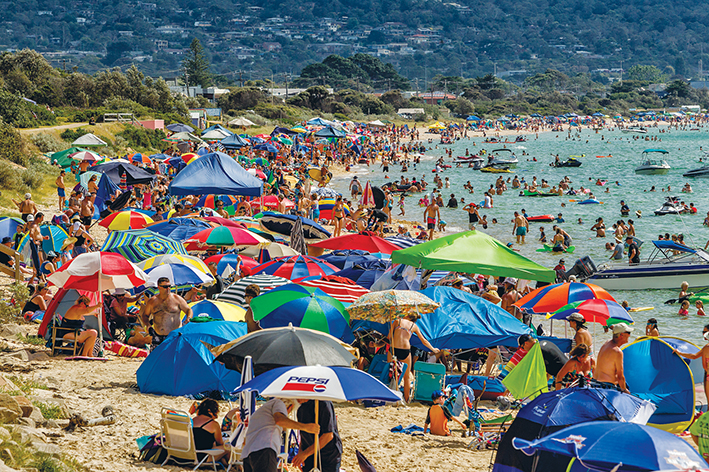MORNINGTON Peninsula’s population will surge 20 per cent from the current 150,000 to nearly 180,000 in the next 20 years, research done for the shire predicts.
The peninsula has long been regarded as a stable population area, which makes the newly calculated growth pattern a bracing challenge for Mornington Peninsula Shire and other authorities responsible for infrastructure such as roads and public transport.
The strongest growth would occur on the Port Phillip side from Mornington to Dromana, Safety Beach and Rosebud and across to Fingal and Cape Schanck, stated the recently released demographic forecast undertaken by consultants Informed Decisions.
Populations would likely drop in some areas, including Flinders, Shoreham, Point Leo, HMAS Cerberus naval base, Moorooduc and Tuerong.
Hinterland villages Red Hill, Merricks and Arthurs Seat would barely grow over the two decades.
The average age of peninsula residents would fall slightly in the next few years then rise for a decade before declining sharply, according to graphs that accompany the findings.
The forecasts were based on 2011 Census data, applying a different modelling approach from that used by the state government, whose predictions are far less conservative that those used by Informed Decisions.
Victoria’s “top-down” approach begins with a statewide forecast that is then divided among regions, sub-regions and finally among local government areas. The shire and Informed Decisions approach is “bottom-up”, with assumptions taken from a local viewpoint.
Prominent among these were the 70–30 split between rural – largely green wedge – and urban land, most recently retained several years ago when councils were invited by now Opposition Leader Matthew Guy (then planning minister) to nominate land that could be moved inside the urban growth boundary.
This shire offered none. The peninsula was not a state-designated growth area, being regarded as Melbourne’s “playground”, with population growing by up to 100,000 during summer. Day trippers add substantially to that number.
The population forecast worked on assumptions drawn from current trends such as pressure for new residential development, available residential land, and restrictions on development. Another factor considered was the rate at which holiday homes were being occupied as permanent residences.
While Peninsula Link freeway had improved life for commuters, it had not improved the lot of people at the end of the freeway and was unlikely to persuade families to buy in the Rye and Sorrento area or move into their holiday home, the report stated.
It assured councillors that the relative conservatism of its figures compared with those in the state survey would not disadvantage the peninsula in seeking funding or having its voice heard.
New housing would go to neighbouring municipalities designated as growth areas, the report stated.


